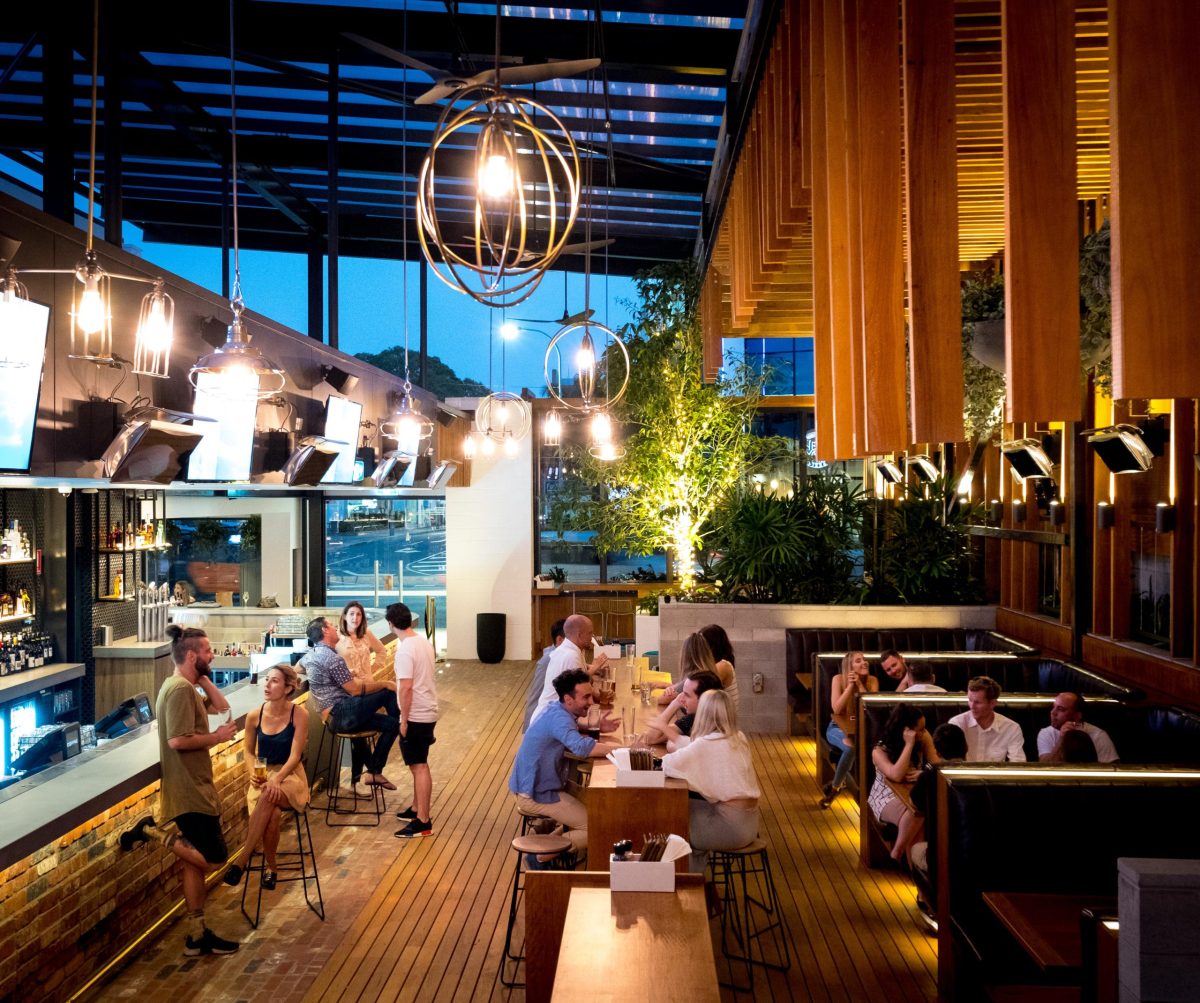The latest iteration of the Osbourne Hotel – formerly Fringe Bar – brings a premier beer garden to Fortitude Valley in Brisbane.
The Fitzgibbons family have owned the pub now known as Osbourne Hotel in Fortitude Valley, Brisbane, since 1980. For the past 15 years it has been operated as Fringe Bar, a late night spot that mainly traded after 10pm on Friday and Saturday nights. Plans have been in the works to completely transform the venue for a while, but had been held up by red tape for a while.
Director Brian Fitzgibbons had wanted to overhaul the business so that its principal trade was not limited to late-night hours, especially with the mandatory ID scanning impeding entry and trade after 10pm.
“We had a session with a branding company in Brisbane who helped us to set about a new strategy. They asked us a lot of questions which helped us resolve what we were trying to achieve, which was bringing it back to a really good hotel, rather than a late-night spot. With Fringe, really all the business was done after 10pm, whereas now it’s happening from lunchtime through, so we’re not so dependent on the late night dollar. It’s more sustainable and more bankable too.”
The renovation consisted of two elements, a minor strip back of the interior of the heritage-listed pub, and – the main aspect – the construction of a new beer garden and services in the space was the old driveway for the loading dock. As part of the transformation, the pub name was changed back to its original title, Osbourne Hotel, after Charles Osbourne who built the hotel in 1864.
Outdoor escape
Having done a lot of research in other parts of Australia and in the United States, Fitzgibbons wanted to create a beer garden for the hotel, in an area of Brisbane where outdoor hospitality spaces are rare. Brand + Slater Architects and construction firm Rohrig – who had both worked on several projects for the Fitzgibbons family before – were brought in to bring to life the vision for an outdoor space that would serve as the main hub of the hotel.
“The outdoor beer garden space was very heavily driven by the hoteliers. They wanted a very traditional beer garden. There’s not any of those in the Valley, not many in the CBD either. They’ve always operated pubs with beer gardens and they wanted to reintroduce one in the city,” explains Rod Barr, director of Brand + Slater Architects.
The new beer garden is an eye-catching space using traditional materials in untraditional ways. The area is full of timber, red brick and concrete, but not in areas where you would expect. Recycled brickwork is used as flooring around the vicinity of the bar, and on the bar itself. Timber is used on the walls and overhead, to create a feeling of enclosure. Polished concrete is used as the bar top. Plantings and colourful artwork that has been created by various street artists over the last decade in different stage of their careers – including a piece from Lister, arguably Australia’s most famous street artist – adds warmth to the space.
“It’s very tropical and suits Queensland. It certainly suits the Valley, which is a very built-up commercial area. It’s somewhere where you can go – particularly if you’re working in one of the many high-rise buildings now – it’s great to come out of that building and be able to relax a bit in a place that offers a great variety of food and beverage in a very relaxed atmosphere,” states Fitzgibbons.
The area is topped off with a clear polycarbonate roof which is fully retractable in parts. It also means that patrons sitting in the beer garden will always feel like they’re outside, but that there is protection from the elements when needed.
Operational inclusions also make for interesting design features in the space, mainly behind the bar. Two copper bulkheads have been used to house 31 taps each on the walls behind the two outdoor bars. They are the only two of their kind in Australia. Barr says that not only are the bulkheads a striking feature, but they were designed after Fitzgibbons gave a directive to remove fonts from between bar staff and patrons.
“We’ve reversed the traditional flow of the bar over the last 15-20 years. It’s very much more a pre-1980s set-up with fonts at the back so there’s a very heavy customer focus from the bartender’s point of view. There are no beer fonts or brewery signage cluttering up the front of the bar. The interaction between the bar staff and patrons is completely uninterrupted.”
This article was first published in the December issue of Australian Hotelier. To continue reading the feature, click here.

